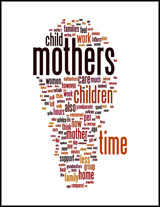The Flirting Report:
the advanced guide to flirting
Kate Fox, Social Issues Research Centre
One thing is certain: interest in flirting, and fascination with courtship techniques and the most effective ways of attracting and retaining sexual partners will never wane. Self-help books, manuals and courses on flirting, dating, courtship, sex and marriage will continue to sell, and novels dealing with these subjects (both wish-fulfilment romances and humorous depictions of the realities and pitfalls of sexual relations) will always be popular.
Social scientists like us will also continue to conduct research on flirting, feeding the insatiable demand for ever more detailed information on this vital subject. With or perhaps in spite of our well-meaning efforts, the flirting instinct will remain as strong as ever, and the species will survive.
This study set out to explore the nature of flirting in Britain today. What is flirting? How much do we flirt? What are the rules? What are the taboos? Who do we flirt with? Where are the hotbeds of flirting, and where are the no-go areas? And what about the future of flirting: how will our flirting habits have changed by the year 2020, and beyond?
We were particularly interested to discover how flirting habits may be affected by modern trends and innovations, such as the rise of the 'singleton' and the advent of email and internet dating. Which aspects of flirting are 'innate' and unchangeable, and which are influenced by new sociocultural trends and patterns? And of course, the Big Question: should women take the initiative and ask men out?
The research was conducted in three stages: a literature review, focus groups and a national survey. We have also drawn significantly on material from SIRC's ongoing 'social intelligence' monitoring of sociocultural trends and patterns, including data from observation fieldwork, participant observation studies and interviews.
Literature review
Using international database and library searches, SIRC collated and reviewed all of the most recent academic research papers, books and journal articles on the subject of flirting and related issues. A selected bibliography is included in this report.
Focus groups
Focus groups were conducted with a representative sample of young people. The focus groups explored their understanding and perceptions of flirting; the role of flirting in their lives; where, when, how and with whom they flirt; their personal rules and taboos; how new social trends have affected their flirting and dating habits; etc.
National survey
Analysis of the focus-group material provided the basis for a national survey, involving interviews with a representative sample of 1000 young people (aged 18-40) across the country. Respondents were asked a series of questions about their relationships and their flirting behaviour, designed to reveal the nature and patterns of flirting and mating in Britain today…[click the link below to read on]
Click here to download and read the full document using Adobe's Acrobat Reader.






